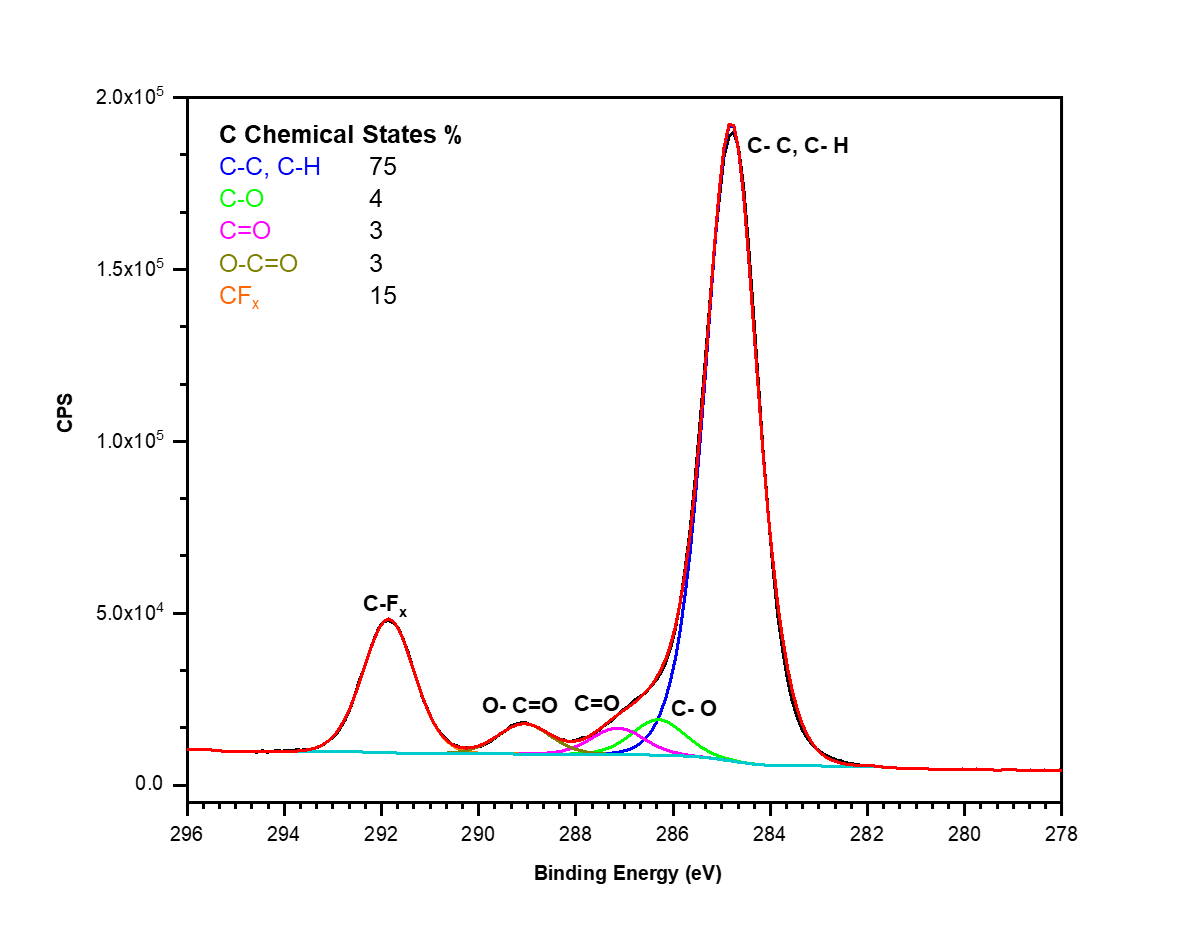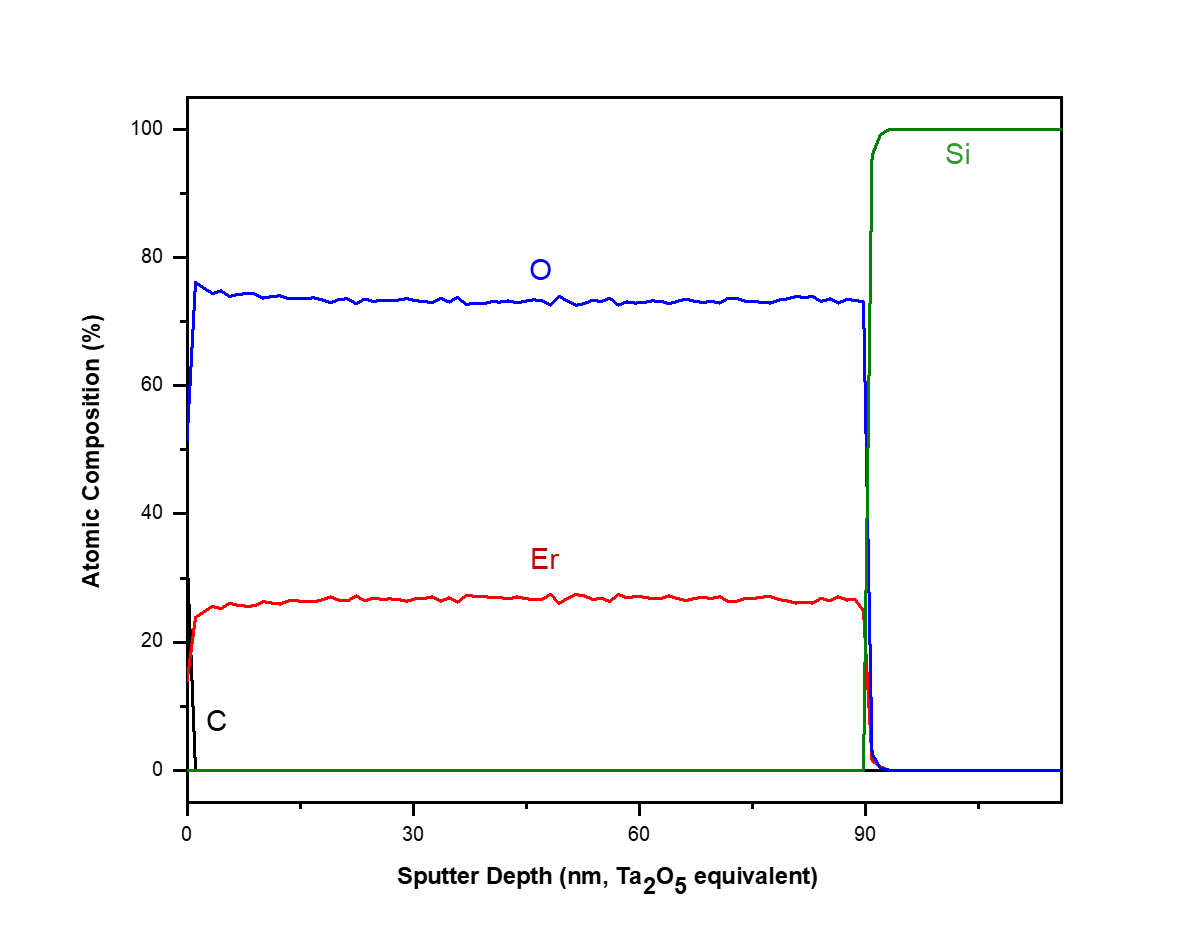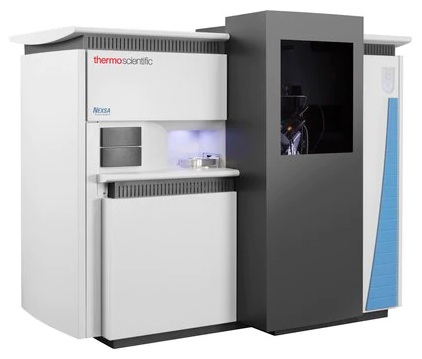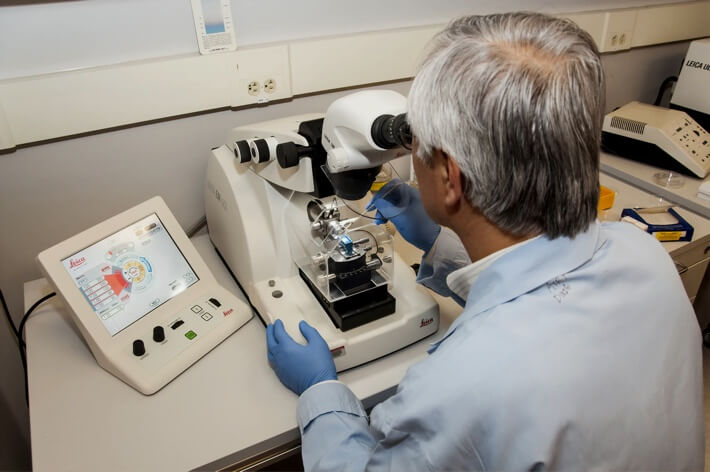
Attenuated Total Reflectance (ATR)
$99 Base price View My Quote RequestX-ray Photoelectron Spectroscopy (XPS)
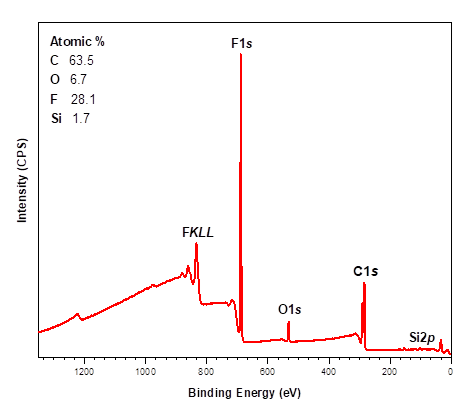
X-ray photoelectron spectroscopy (XPS) is a highly surface-specific chemical analytical technique used to probe the elemental composition and bonding states in the outermost 2-10 nm of a solid surface.
- Quick and easy sample preparation
- Rapid data acquisition
- Accurate quantitative elemental composition in the near-surface region (2-10 nm)
- Charge neutralization is possible for non-conducting materials
- Lateral resolution limited to about 10 microns
- Sputter depth profiling to assay chemical changes with depth can lead to artifacts and sample damage
- Bonding information cannot always be determined
Technical Specifications:
Learn More:
XPS makes use of the photoelectric effect to stimulate electron emission from the sample surface with a high-energy X-ray source. The photoelectrons which escape the sample surface by this process have kinetic energies uniquely correlated to the elemental species of the atom they emit from.
An energy analyzer is used to tally and measure the kinetic energies of the photoelectrons. This data is computationally transformed into a binding-energy scale. The system then outputs a final spectrum contrasting binding energy (BE) with measured signal intensity, called a survey scan allowing for quantitative elemental composition determination.
High-energy-resolution scans of selected elemental peaks are also done to analyze and quantify bonding states of the elements present.
To characterize composition as a function of penetration depth in the sample, depth-profiling tests can be performed to iteratively access sub-surface compositional layers.
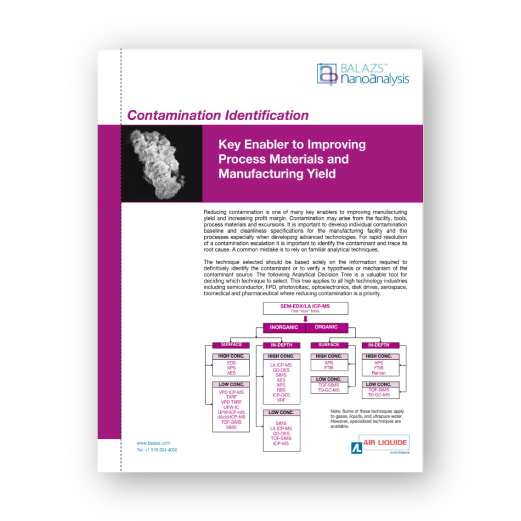
Contamination Identification
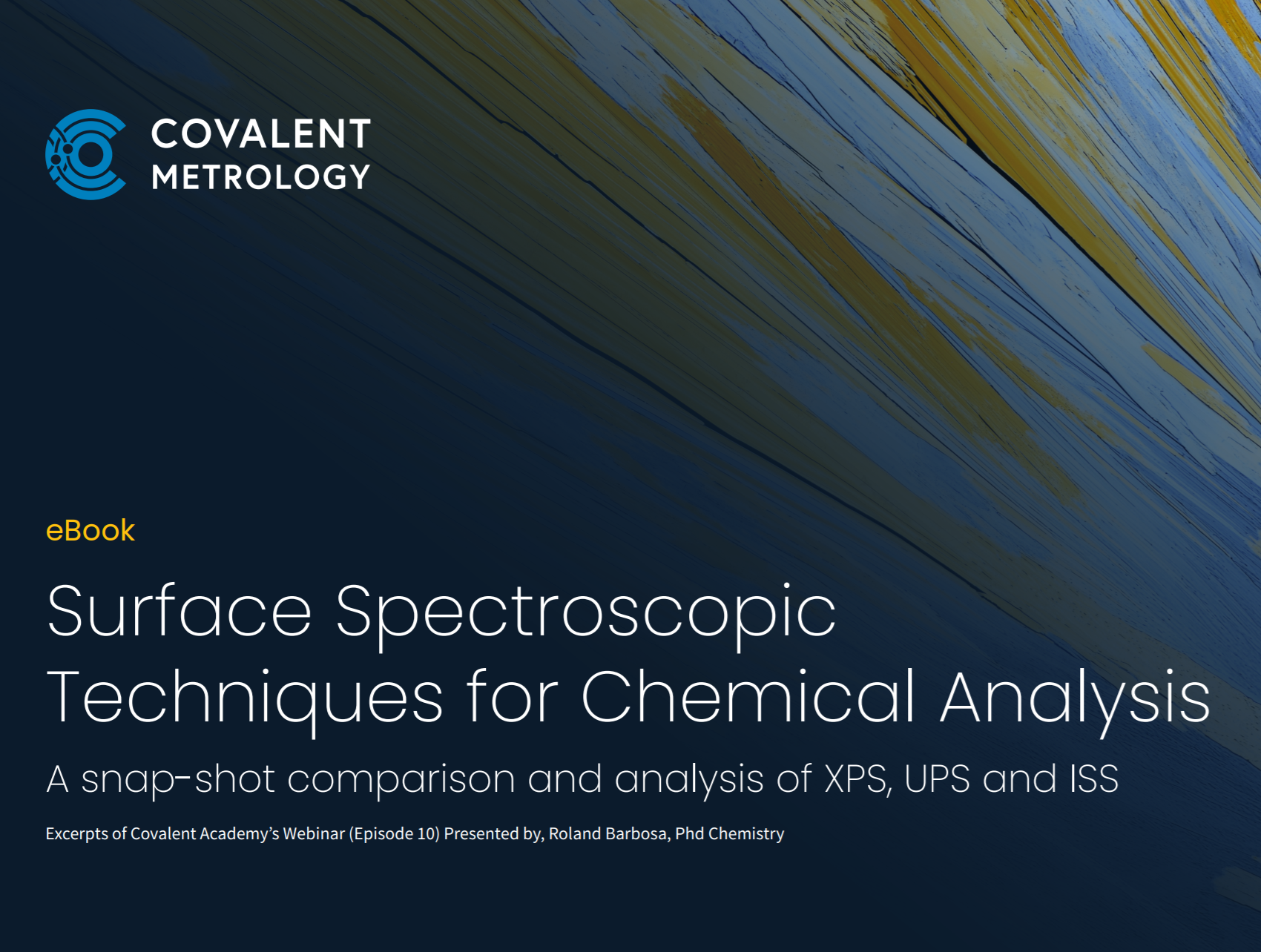
E-Book: Surface Spectroscopic Techniques for Chemical Analysis

Time of Flight Secondary Ion Mass Spectroscopy (ToF-SIMS)
Time of flight secondary ion mass spectroscopy (ToF-SIMS) is a highly surface-specific analytical technique used to qualitatively assess...
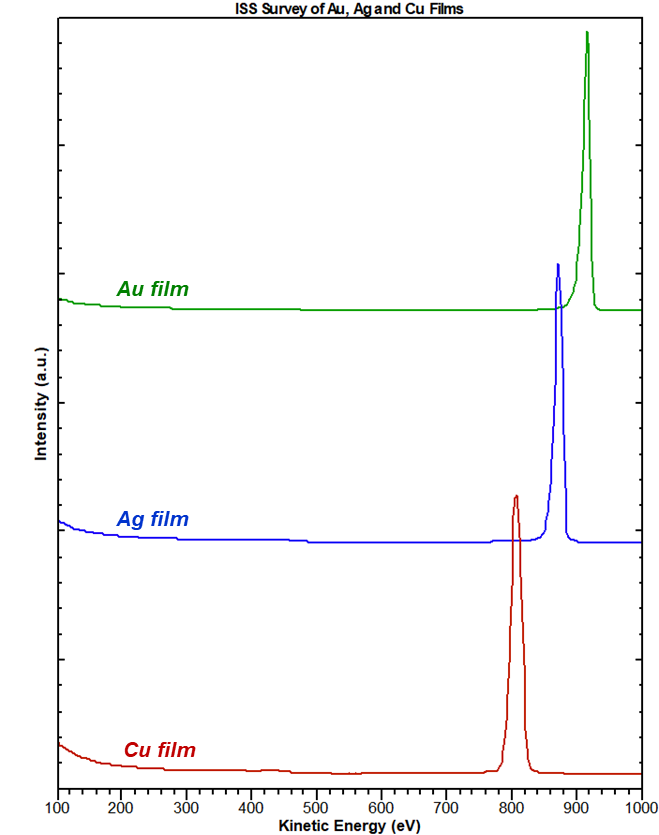
Ion Scattering Spectroscopy (ISS)
Ion scattering spectroscopy (ISS) provides quantitative elemental composition information from the very outermost atomic layer of a surface....
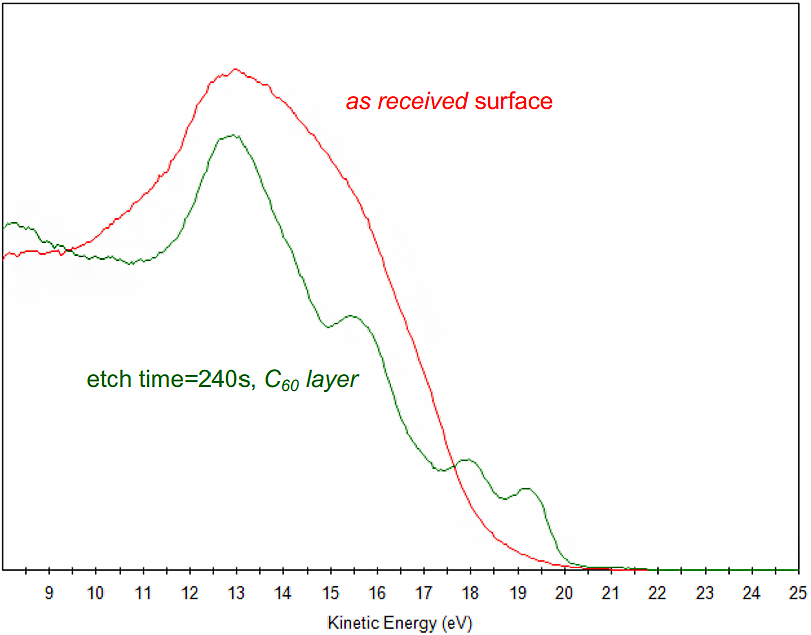
Ultraviolet Photoelectron Spectroscopy (UPS)
UPS is often performed in conjunction with X-ray Photoelectron Spectroscopy (XPS), a powerful surface chemical characterization technique. Unique...

